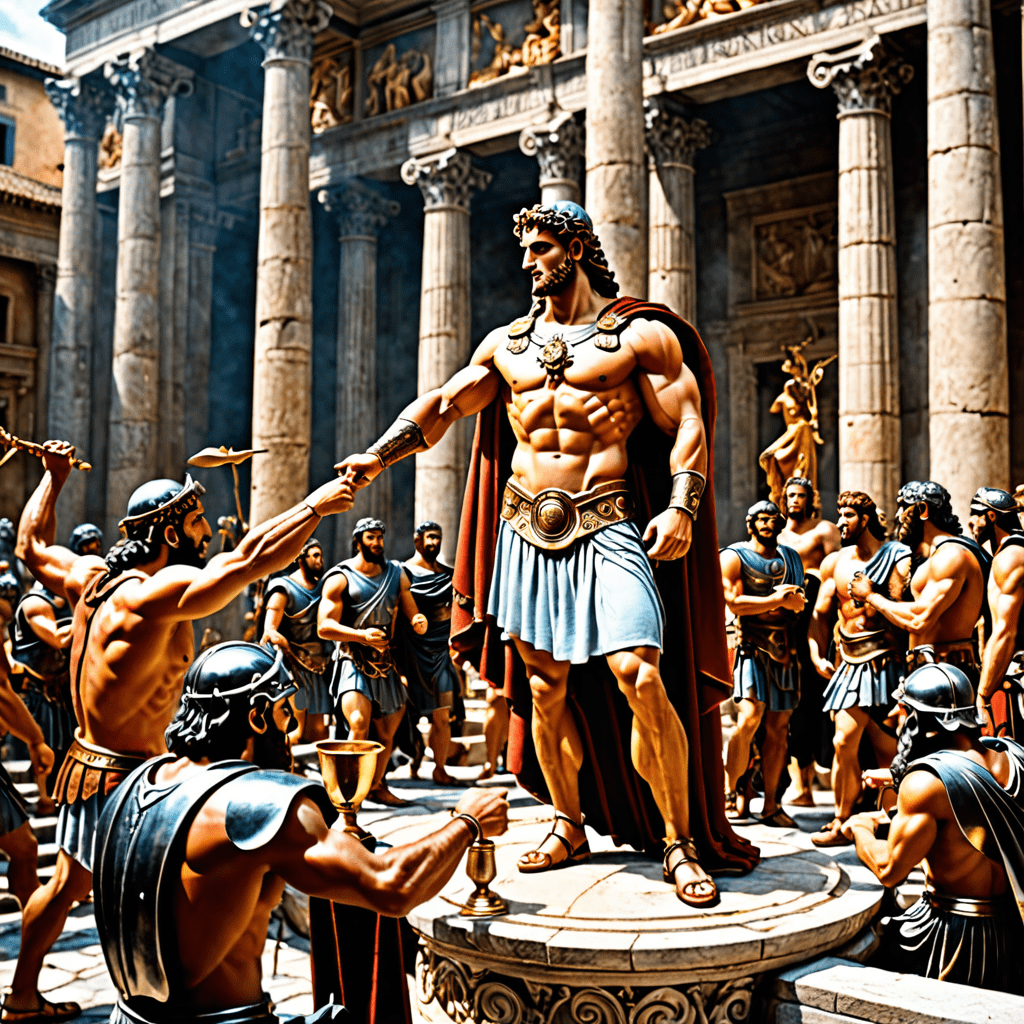Underworld Myths: The Dark Tales That Shape Our Beliefs
I. Introduction to Underworld Myths
Underworld myths are narratives that explore the realms associated with death and the afterlife. They often depict a journey into a hidden world beneath the earth, where souls reside after death. These myths serve various purposes, including explaining the unknown, instilling moral values, and providing comfort in the face of mortality.
Throughout history, underworld myths have played a significant role in shaping cultural beliefs and practices. They offer insights into how different civilizations perceive life, death, and the moral implications of human actions. This article aims to explore the historical context, common themes, cultural comparisons, psychological impacts, and contemporary relevance of underworld myths.
II. The Historical Context of Underworld Myths
The origins of underworld beliefs can be traced back to ancient civilizations such as Mesopotamia, Egypt, and Greece. Each culture developed its own unique narratives surrounding death and the afterlife, often influenced by their environment and societal norms.
- Mesopotamia: The Sumerians believed in a dreary underworld called Kur, where all souls went, regardless of their earthly deeds.
- Egypt: The concept of the Duat was central to Egyptian mythology, where the soul would navigate a series of trials before reaching the afterlife.
- Greece: The Greeks depicted the Underworld, ruled by Hades, as a place where souls were judged and assigned to various realms based on their earthly lives.
Over time, these myths evolved, often blending with one another as cultures interacted. Geography and environment significantly influenced these narratives; for instance, cultures with rich agricultural traditions often viewed death as a transition to a new cycle of life, whereas nomadic societies might have seen it differently.
III. Common Themes in Underworld Myths
While the specifics of underworld myths differ across cultures, several common themes emerge:
- Death and the Afterlife: Most myths provide explanations for what happens after death, offering comfort and hope to the living.
- Judgment and Moral Consequences: Many narratives include a judgment phase where souls are assessed based on their earthly actions, influencing their fate in the afterlife.
- The Role of Deities and Supernatural Beings: Gods, goddesses, and other supernatural entities often play crucial roles in guiding souls or enforcing moral laws.
IV. Comparative Analysis of Underworld Myths Across Cultures
Exploring different cultures reveals a rich tapestry of beliefs surrounding the underworld:
A. Greek and Roman Perspectives (Hades and the Underworld)
In Greek mythology, Hades is the god of the Underworld, where souls are judged and sent to either the Elysian Fields for the virtuous or Tartarus for the wicked. The Romans adopted these beliefs, naming their underworld after Pluto, the god of wealth.
B. Egyptian Beliefs (Duat and the Afterlife)
The Duat in Egyptian mythology is a complex realm filled with trials. The deceased would navigate this underworld, facing challenges and ultimately standing before Osiris for judgment.
C. Norse Mythology (Hel and the Realms of the Dead)
Norse beliefs depict Hel as the realm for those who did not die a heroic death. It is governed by the goddess Hel, and the narrative emphasizes the importance of valor in life.
D. Asian Interpretations (Yama in Hindu and Buddhist Traditions)
In Hinduism and Buddhism, Yama is the god of death, who judges souls and determines their next incarnation. The cycle of rebirth is central to these beliefs, reflecting a different perspective on the afterlife.
V. The Psychological Impact of Underworld Myths
Underworld myths profoundly influence human psychology, particularly concerning death:
- Fear and Acceptance of Death: These myths help individuals confront their fears about mortality, providing narratives that explain and normalize the experience of death.
- Shaping Moral and Ethical Frameworks: The judgment aspect of many myths encourages ethical behavior, influencing societal norms and personal conduct.
- Storytelling as Coping Mechanism: Myths serve as a means for individuals to process existential questions and find meaning in life’s transience.
VI. Underworld Myths in Literature and Art
Underworld myths have inspired countless literary works and artistic expressions:
- Dante’s “Inferno”: This literary classic explores the concept of the afterlife through vivid imagery and allegory.
- Visual Arts: Artists such as Hieronymus Bosch have depicted scenes of the underworld, portraying moral consequences and the journey of souls.
- Modern Adaptations: Contemporary stories often reinterpret these myths, integrating them into new narratives to address current societal issues.
VII. Underworld Myths in Contemporary Society
In modern culture, underworld myths continue to influence various forms of media:
- Popular Culture: Movies and TV shows often draw from these myths, with themes of death and the afterlife prevalent in horror and fantasy genres.
- Resurgence of Interest: There is a growing fascination with ancient myths, as people seek to connect with cultural heritage and explore existential themes.
- Psychological Relevance: In a world facing rapid change, these myths provide a framework for understanding life and death.
VIII. Underworld Myths and Their Role in Religion
Underworld concepts are integral to many world religions:
- Examination of Myths: Religions such as Christianity, Islam, and Judaism have their own interpretations of the afterlife, often influenced by earlier myths.
- Intersection of Mythology and Spiritual Beliefs: Many religious practices incorporate elements of underworld myths, impacting worship and rituals.
- Rituals and Practices: Funerary rites and remembrance practices often reflect the beliefs surrounding the afterlife and the journey of the soul.
IX. Critiques and Debates Surrounding Underworld Myths
Underworld myths are not without controversy:
- Academic Perspectives: Scholars debate the origins and validity of these myths, analyzing their cultural significance and historical context.
- Relevance in Modern Context: Some argue that underworld myths may no longer resonate in contemporary society, while others believe they remain relevant in understanding human nature.
- Impact of Globalization: The blending of mythologies through globalization raises questions about the preservation of local narratives and traditions.
X. Conclusion: The Enduring Legacy of Underworld Myths
Underworld myths, with their rich histories and profound themes, continue to shape our understanding of life, death, and morality. They serve as a lens through which we can explore our fears, beliefs, and cultural identities.
Preserving these tales is essential, as they offer insights into the human experience and the diverse ways we grapple with the concept of mortality. As we move forward, the enduring legacy of underworld myths will undoubtedly continue to influence literature, art, and societal values.



